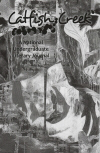The London Magazine (TLM) upholds a high standard of tone, diction, and point of view. The oldest cultural journal in the United Kingdom, TLM began publication in 1732; it has published a list of writers that includes Wordsworth, Shelley and Keats, T. S. Eliot, Sylvia Plath, Dylan Thomas and Doris Lessing. This issue contains essays on a variety of cultural topics, including eight lengthy book reviews, as well as poetry by seven fine poets and one short story. The volume is clean and sharp in appearance; inside, the text is pleasing to the eye, neither too small nor too large, and well-spaced on the page. Color reproductions of the latest paintings by Pakistani artist Jamil Naqsh grace the cover and comprise a special section within the issue. An excerpt from the commentary, by venerable art critic Edward Lucie-Smith, will give an indication of the tone of the magazine: Continue reading “The London Magazine – June/July 2013”

